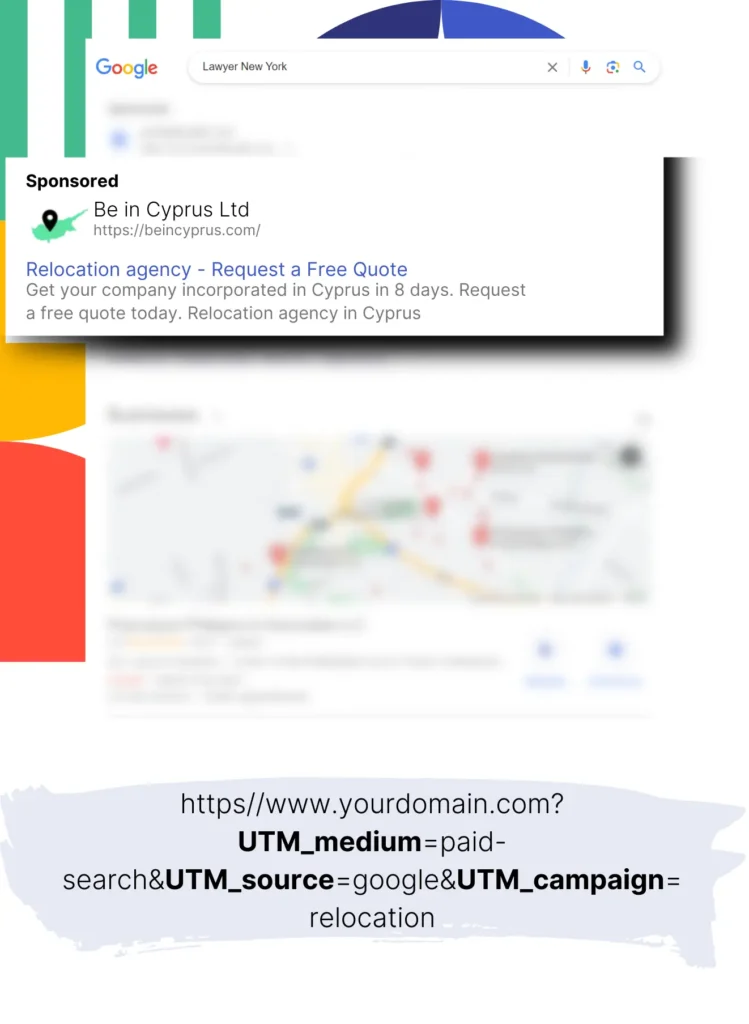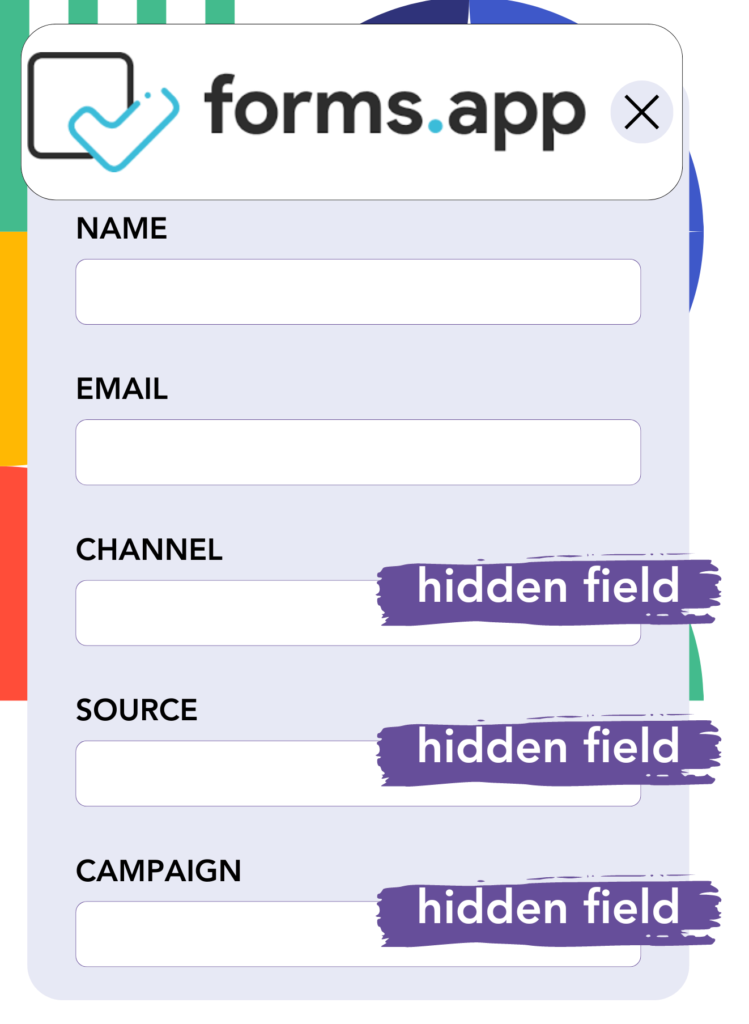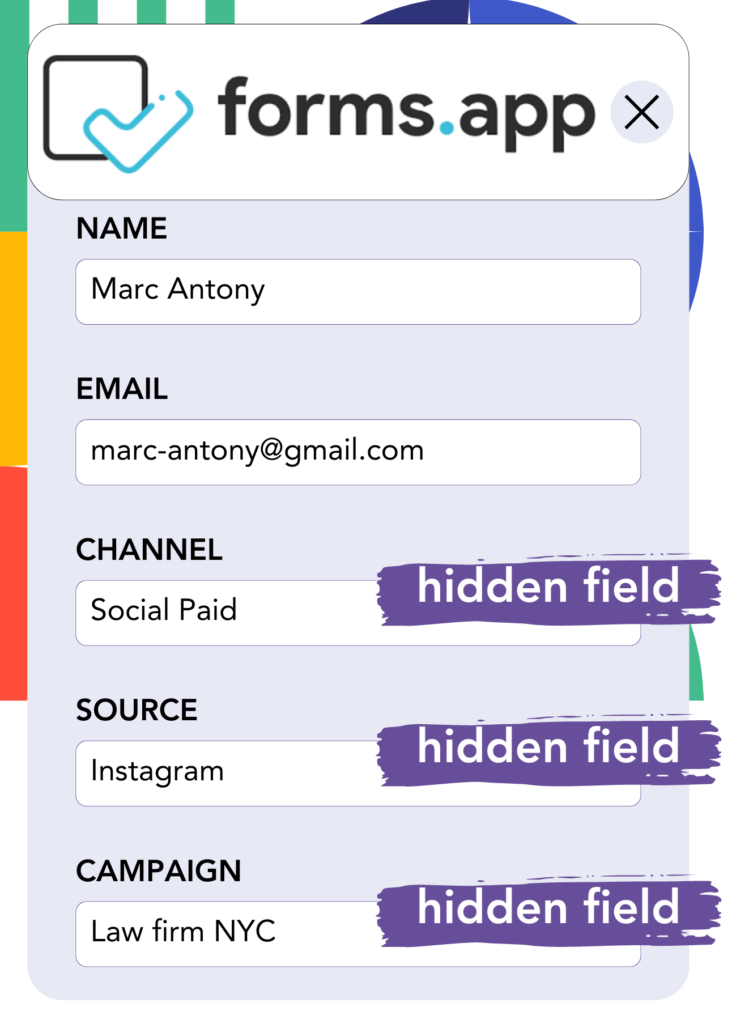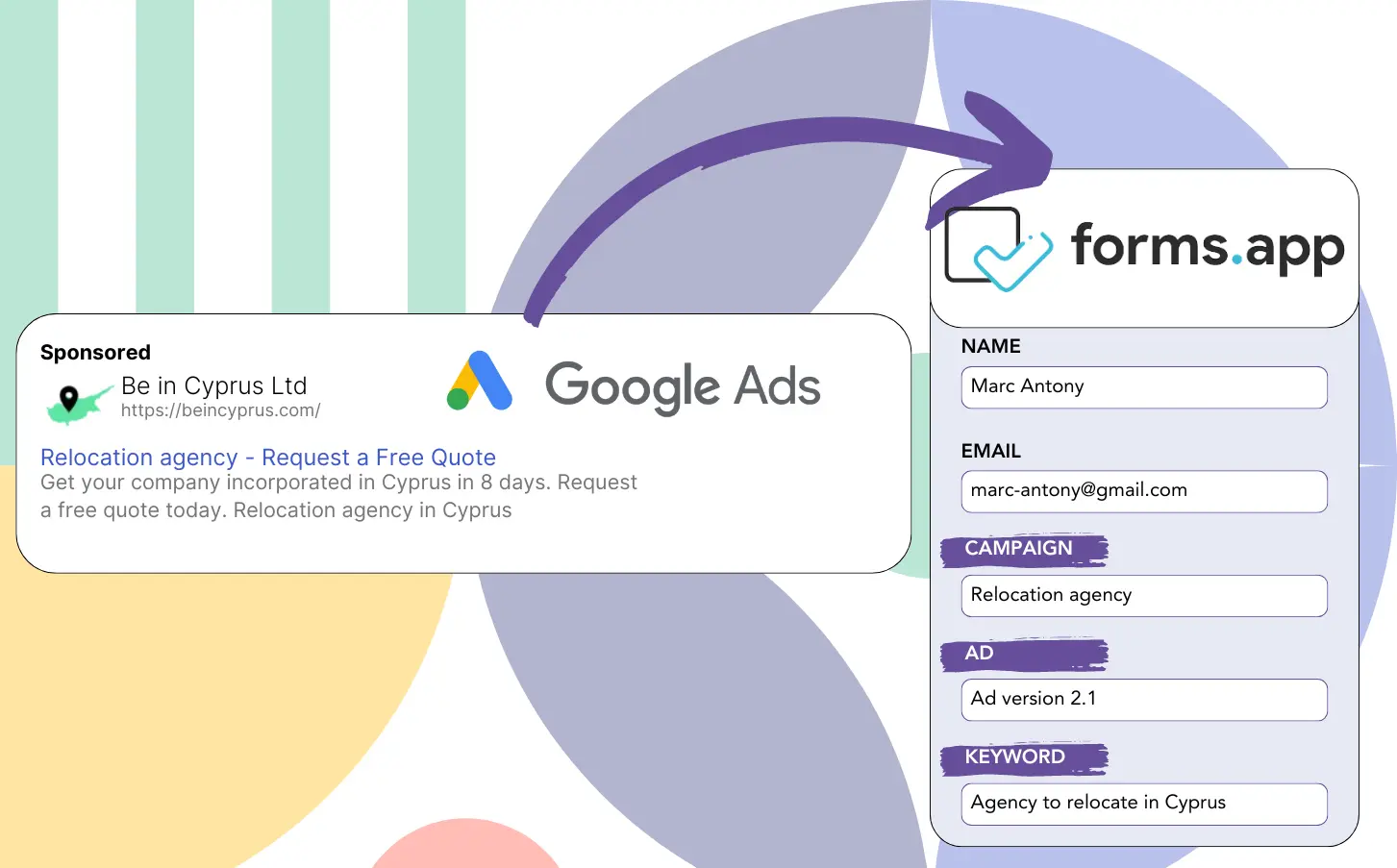Is it unclear which campaigns in Google Ads are driving your leads?
This is a familiar issue where Google Ads provides aggregate lead data from campaigns, ads, or keywords but lacks detailed information on each lead.
Consequently, it’s unclear which campaign, ad, or keyword was effective in converting leads into customers.
Leadsources offers a way to solve this issue.
Leadsources provides the capability to track Google Ads information (campaign, ad, keyword, etc.) for each lead.
You can keep Google Ads metrics (campaign, ad, keyword, etc.) in forms.app for each lead generated.
Generate reports such as “Keywords driving the most leads” to determine which keywords to boost and which to drop.
Let’s get into this!
Capture Google Ads lead data in forms.app in 4 steps
Step 1: Add Leadsources in the head tag of your website

Sign up to Leadsources.io, and benefit from our 14-day free trial.
Place the Leadsources code inside the head tag of your site. Coding skills are not required.
Simply follow this easy step-by-step guide.
Step 2: Add the UTM parameters to your Google Ads campaigns

Place the UTM parameters you want to track in every Google Ads campaign.
Examples of UTM parameters to add to your ad include:
- UTM_source
- UTM_campaign
- UTM_term
- UTM_content
Leadsources includes extra data not covered by UTM parameters, such as channel, landing page, and landing page subfolder, ensuring a thorough lead-level view.
Step 3: Add the hidden fields in forms.app

Leadsources automatically fills the hidden fields with Google Ads details (campaign, ad, keyword, landing page, etc.) as visitors enter information into your forms.app (name, email, etc.).
To implement this, consult the step-by-step guide for adding hidden fields in forms.app.
Google Ads data will be saved directly into your forms.app by Leadsources.
Step 4: Capture the Google Ads data in forms.app

When someone clicks on your Google Ads ad and comes to your page, Leadsources captures the relevant Google Ads data (campaign, ad, keyword, landing page, etc.).
The hidden fields of your forms.app are automatically updated with Google Ads data by Leadsources.
When the form is completed, the Google Ads data and the form responses are sent to the forms.app submissions page.
How does Leadsources work?
Adding the Leadsources code to the head tag will enable it to collect Google Ads data (UTM parameters and referrer) whenever someone visits your website.
The Google Ads data is automatically saved in the hidden fields of your forms.app.
If UTM parameters are missing in the URL, Leadsources will still obtain data via the referrer:
- Channel
- Source
- Campaign
- Landing page
- Landing page subfolder
This approach enables you to observe vital lead source details even if UTM parameters are not included, containing:
- On Google Search
- On your Instagram bio link
- On your social media posts
- Etc.
Most tools track lead data exclusively with UTM parameters (primarily for paid and referral channels) – this presents a challenge!
However, Leadsources captures lead information from all sources, regardless of UTM parameters:
- Organic Search
- Paid Search
- Organic Social
- Paid Social
- Referral
- Affiliate
- Display Advertising
- Direct Traffic
This makes it possible to track and unify all lead source information into one central location.
Pro tip:
Track Google Ads data in all the popular online form builders, including Cognito Forms, Gravity Forms, Jotform, Typeform, WPForms, and more. Learn how to add Google Ads UTM parameters in any form builder.
How to run performance reports
With your Google Ads data captured in forms.app, you can now prepare performance reports like:
- Leads per campaign
- Leads per ad
- Leads per keyword
- Etc.
This assists you in making well-informed choices about your Google Ads costs.
Let’s consider the various reports you can generate.
Lead performance reports
You can generate reports detailing the volume of leads from:
- Channel
- Campaign
- Ad
- Keyword
- Landing page
- Landing page subfolder
Example #1
You can create a report titled “Leads by Channel” by exporting data from campaigns on various channels (SEO, PPC, email, etc.).

Example #2
Once you determine which channel yields the most leads (e.g., Google Ads), you can select it to view the lead count for each particular ad campaign.

Example #3
After identifying the campaign that generates the most leads, you can analyze which individual keywords are driving these results.

Sales performance report
While identifying the ads and keywords that attract the most leads is beneficial, do they also result in increased revenue?
By moving forms.app data into a CRM, you can create robust sales reports.
Example:
| Channels | Search Paid | Social Paid |
| Leads | 50 | 75 |
| Sales | 5 | 6 |
| Average order value | $150 | $100 |
| Revenue | $750 | $600 |
After analyzing ads on Google and Facebook, you found that Social Paid ads resulted in more leads than Search Paid ads.
After weeks of analysis, it became apparent that Search Paid produced more revenue with fewer leads than Social Paid. This helps justify increasing the budget for Search Paid campaigns.
LeadSources tracks the source of each lead in forms.app, whether they come from ads, organic search, social, email, etc. and syncs that data with each submission. See the full breakdown on the lead source in forms.app page.

